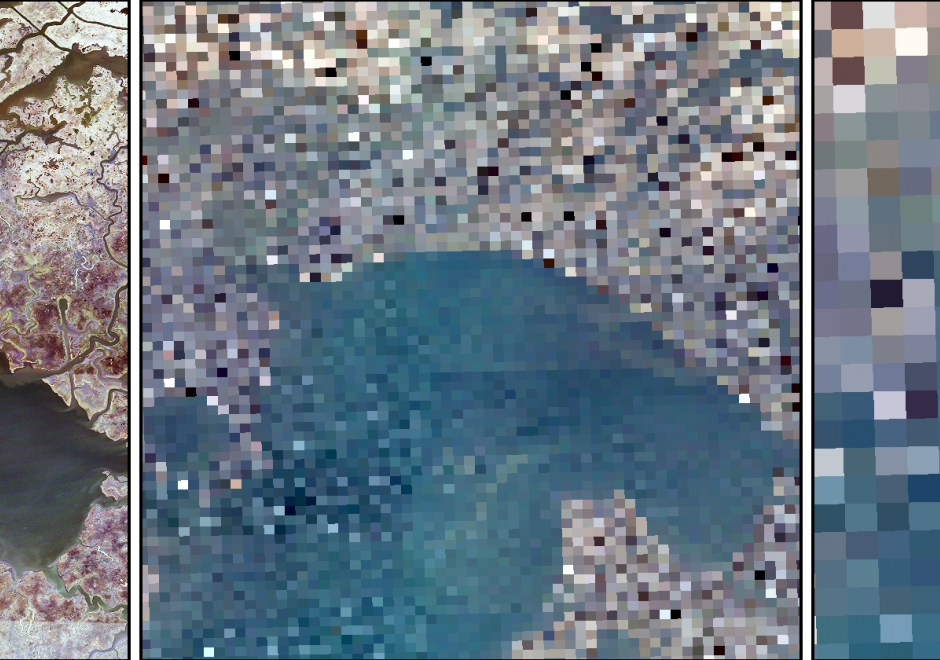FC-21 - Resolution

Resolution in the spatial domain refers to the size of the smallest measurement unit observed or recorded for an object, such as pixels in a remote sensing image or line segments used to record a curve. Resolution, also called the measurement scale, is considered one of the four major dimensions of scale, along with the operational scale, observational scale, and cartographic scale. Like the broader concept of scale, resolution is a fundamental consideration in GIScience because it affects the reliability of a study and contributes to the uncertainties of the findings and conclusions. While resolution effects may never be eliminated, techniques such as fractals could be used to reveal the multi-resolution property of a phenomenon and help guide the selection of resolution level for a study.

AM-34 - The Geographically Weighted Regression Framework
Local multivariate statistical models are increasingly encountered in geographical research to estimate spatially varying relationships between a response variable and its associated predictor variables. In geography and many other disciplines, such models have been largely embedded within the framework of regression and can reveal significantly more information about the determinants of observed spatial distribution of the dependent variable than their global regression model counterparts. This section introduces one type of local statistical modeling framework: Geographically Weighted Regression (GWR). Models within this framework estimate location-specific parameter estimates for each covariate, local diagnostic statistics, and bandwidth parameters as indicators of the spatial scales at which the modeled processes operate. These models provide an effective means to estimate how the same factors may evoke different responses across locations and by so doing, bring to the fore the role of geographical context on human preferences and behavior.